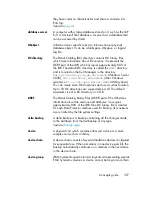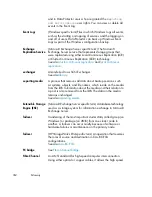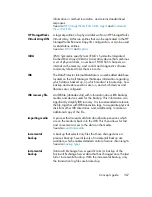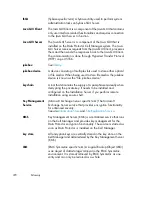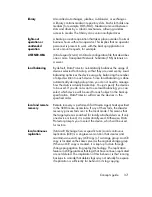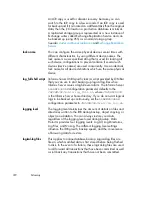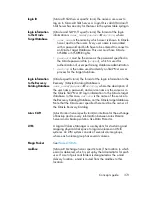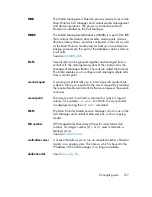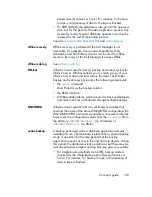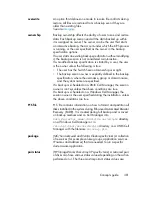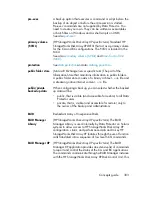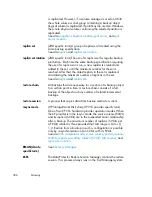
library
Also called autochanger, jukebox, autoloader, or exchanger.
A library contains media in repository slots. Each slot holds one
medium (for example, DDS/DAT). Media are moved between
slots and drives by a robotic mechanism, allowing random
access to media. The library can contain multiple drives.
lights-out
operation or
A backup or restore operation that takes place outside of normal
business hours without an operator. This implies that no operator
unattended
operation
personnel is present to work with the backup application or
service mount requests, for example.
LISTENER.ORA
(Oracle specific term) An Oracle configuration file that describes
one or more Transparent Network Substrate (TNS) listeners on
a server.
load balancing
By default, Data Protector automatically balances the usage of
devices selected for backup, so that they are used evenly. Load
balancing optimizes the device usage by balancing the number
of objects written to each device. Since load balancing is done
automatically during backup time, you do not need to manage
how the data is actually backed up. You just specify the devices
to be used. If you do not want to use load balancing, you can
select which device will be used for each object in the backup
specification. Data Protector will access the devices in the
specified order.
local and remote
recovery
Remote recovery is performed if all Media Agent hosts specified
in the SRD file are accessible. If any of them fails, the disaster
recovery process fails over to the local mode. This means that
the target system is searched for locally attached devices. If only
one device is found, it is automatically used. Otherwise, Data
Protector prompts you to select the device, which will be used
for restore.
local continuous
replication
(Microsoft Exchange Server specific term) Local continuous
replication (LCR) is a single-server solution that creates and
maintains an exact copy (LCR copy) of a storage group. An LCR
copy is located on the same server as the original storage group.
When an LCR copy is created, it is kept up to date through
change propagation (log replay) technology. The replication
feature in LCR guarantees that logs that have not been replicated
are not deleted. The implication of this behavior is that running
backups in a mode that deletes logs may not actually free space
if replication is sufficiently far behind in its log copying.
Concepts guide
371
Summary of Contents for B6960-96035
Page 17: ...Overview of backup and automated media copy sessions 340 105 Concepts guide 17 ...
Page 20: ...20 ...
Page 22: ...Publication history 22 ...
Page 132: ...Planning your backup strategy 132 ...
Page 182: ...Media management and devices 182 ...
Page 186: ...Users and user groups 186 ...
Page 204: ...The Data Protector internal database 204 ...
Page 218: ...Figure 62 Direct SIP integration example Service management 218 ...
Page 242: ...Integration with database applications 242 ...
Page 264: ...Synthetic backup 264 ...
Page 274: ...Split mirror concepts 274 ...
Page 288: ...Snapshot concepts 288 ...
Page 344: ...Further information 344 ...
Page 402: ...Glossary 402 ...

